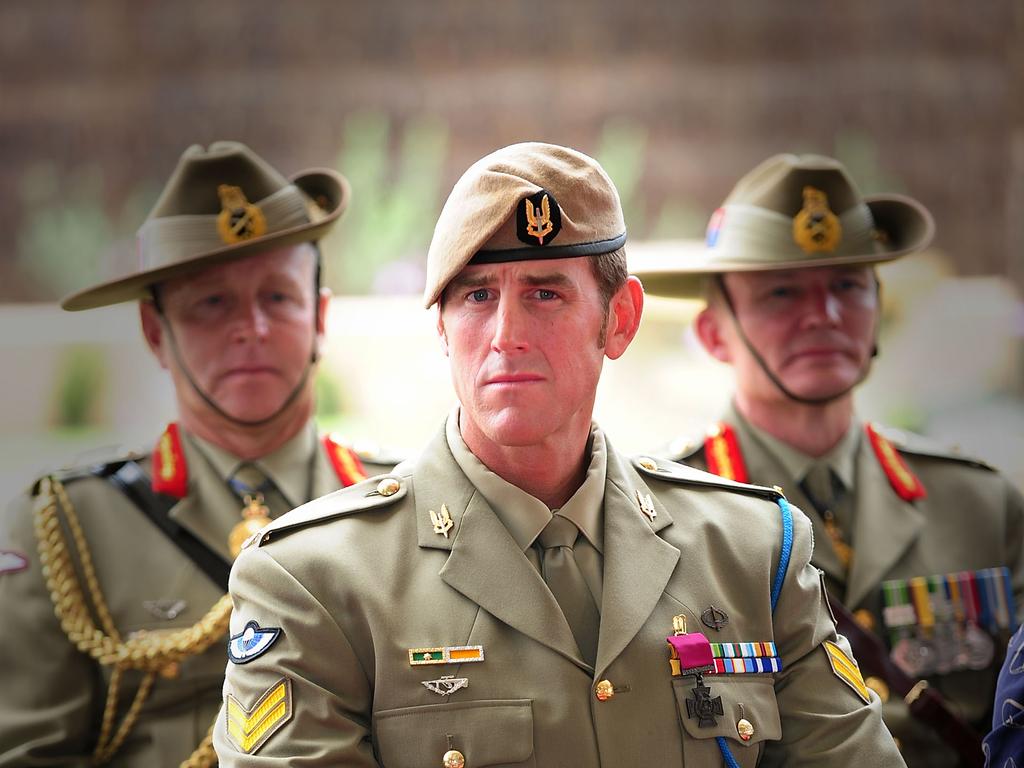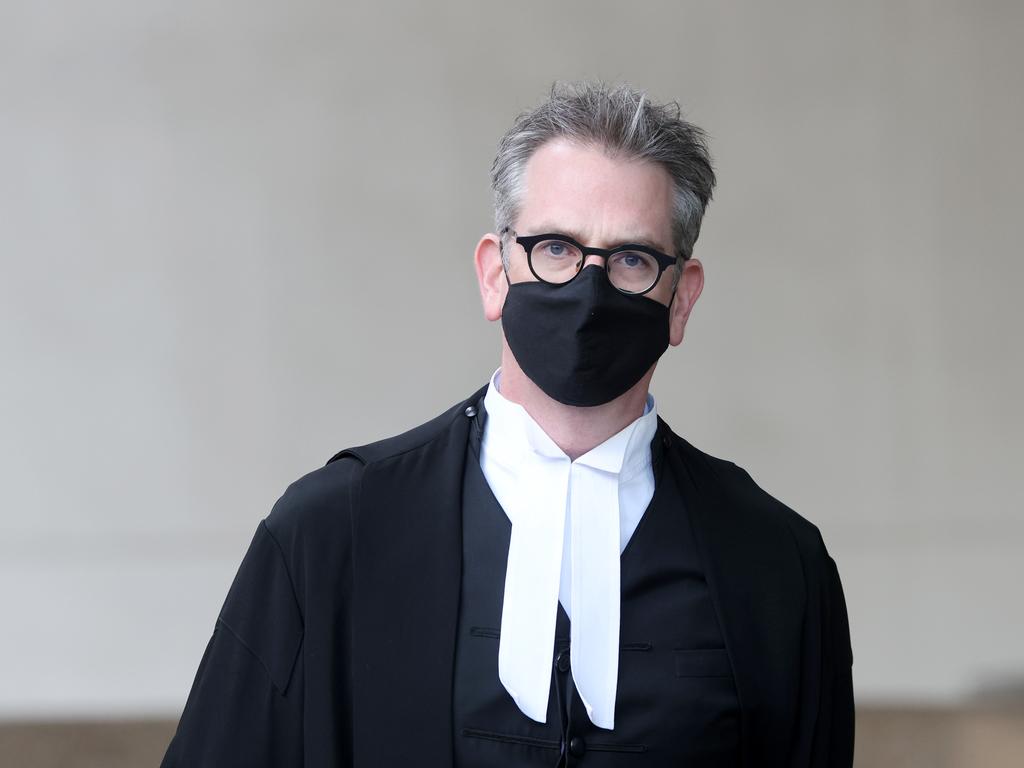Ben Roberts-Smith denies images on home computer put national security at risk
War hero Ben Roberts-Smith has hit back at allegations he put national security at risk but admitted in court he did make a ‘poor decision’.
Ben Roberts-Smith has denied he put national security at risk by keeping classified images on his home computer, but has conceded in court it was a “poor decision”.
The former SAS soldier is suing Nine newspapers for defamation over a series of reports which he says falsely painted him as a war criminal.
The Victoria Cross recipient returned to the witness box for a tenth day of testimony in the high profile Federal Court case on Thursday, where he answered allegations about images sent to him by fellow SAS soldiers via mail on thumb drives.
The court heard Mr Roberts-Smith was posted the USB drives between 2019 and 2020 and they contained images from a mission in Afghanistan during which a compound known as Whiskey 108 was stormed.
Mr Roberts-Smith has said he was sent the USB drives after asking colleagues for any information, but was not aware of who sent each particular drive.

Under cross-examination from Nine’s barrister Nicholas Owens, Mr Roberts-Smith admitted some of the images were protected by national security laws and shouldn’t have been in his possession.
But he strongly denied that by having them stored on his personal computer that he was putting the country’s national security at risk.
“That is a stretch too far,” Mr Roberts-Smith said.
“Those images had absolutely nothing to do with Australian security. Everyone can see that, those images are about a building.
“It was the wrong thing to do, but to suggest I put national security at jeopardy is completely false.”
Mr Roberts-Smith reiterated his denial that he had at any point buried the USBs in his backyard, maintaining that they were kept in his desk at his home on Queensland’s Sunshine Coast.
Mr Roberts-Smith maintained that he kept the images because he was facing allegations he shot dead a man with a prosthetic leg outside Whiskey 108.
He said the pictures were important to his case against The Age, The Sydney Morning Herald and The Canberra Times.
“I was being attacked … It was a poor decision by me to maintain those images, I had no intention of doing anything untoward other than sharing them with my legal team for these proceedings,” he said.

The court has heard that the images were transferred onto a laptop which was wiped clean by Mr Roberts-Smith several days after Nine’s lawyers had sought him to produce it.
Mr Roberts-Smith said at the time he was trading in his laptop and didn’t want any information on the computer falling into the hands of other people.
Mr Owens suggested to him that he had not followed Apple’s instructions on how to wipe a hard drive and had instead used a specialist program.
He argued that the contents of the USBs had already been handed over to Nine’s journalist by his ex-wife Emma Roberts, and it was already in the possession of the company’s lawyers.
He said he wanted the laptop wiped clean so there was no chance of anyone “getting anything off it.”
Mr Owens accused Mr Roberts-Smith of engaging in a “course of conduct” to conceal information which was damaging to his case.
“I’m not trying to conceal evidence and never have,” Mr Roberts-Smith said.

In the lead up to the case, Mr Roberts-Smith has been accused of meeting with his former SAS colleagues in Perth, Canberra, New Zealand and the US.
Among the allegations made in the newspaper stories is that he shot a man with a prosthetic leg outside the compound.
The court has previously heard an allegation Mr Roberts-Smith shot him “10 to 15 times.”
During a meeting in Canberra, a fellow former soldier known as Person 14 told Mr Roberts-Smith that “the truth was the only thing that would protect him” and he refused to lie, Mr Owen suggested.
“He told you ‘you machine gunned that guy,” Mr Owens said.
“He didn’t say that,” Mr Roberts-Smith said.
During a tense exchange, Mr Owens put to Mr Roberts-Smith he had told Person 14: “Careful who you’re f***ing talking to.”
“That’s completely false,” Mr Roberts-Smith replied.
Mr Roberts-Smith denied he earned the Medal for Gallantry for shooting an unarmed teenager.
Nine’s defence have relied on claims that Mr Roberts-Smith and the late Sergeant Matt Locke shot and killed a teenage boy.
Mr Roberts-Smith’s barrister Bruce McClintock previously said he was a “fighting age male” and a “spotter” for the enemy in the Chora Pass.
The court heard that Mr Roberts-Smith had previously claimed that the person killed was carrying a weapon but had subsequently altered his story to say he was unarmed.
Mr Roberts-Smith that he had “conflated” the details of another battle.
“I hardly think it shows anything untoward,” Mr Roberts-Smith said.
“The justification was there, I didn’t need to change my story.”
Mr Owens put it to Mr Roberts-Smith that he had shot an unarmed teenager.
“Not only is that a disgusting comment, it’s completely false,” Mr Roberts-Smith.
The trial continues.




